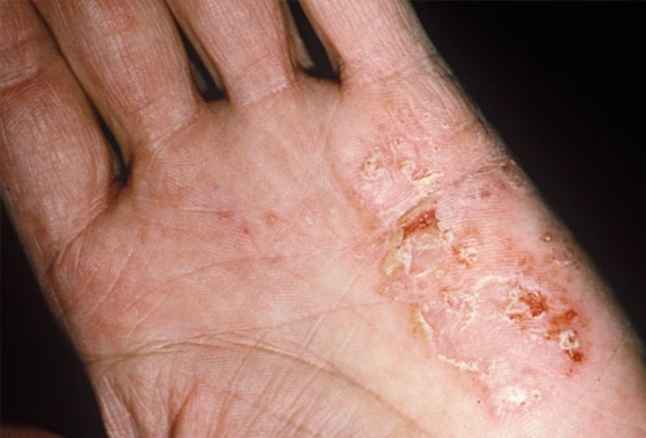These Technical Guidelines are intended to assist those who cherish the valuable wild apple and pear gene pool and its inheritance, through conserving valuable seed sources or use in practical forestry. The focus is on conserving the genetic diversity of the species at the European scale.
The recommendations provided in this module should be regarded as a commonly agreed basis to be complemented and further developed in local, national, or regional conditions. The Guidelines are based on the available knowledge of the species and on widely-accepted methods for the conservation of forest genetic resources.
Biology and Ecology
Wild apple (Malussylvestris (L.) Mill.) and wild pear (Pyruspyraster(L.) Burgsd.) belong to the family Rosaceae. They’re insect-pollinated and are both quite rare species. Wild apple trees have expanded crowns and often look like bushes. They can grow up to 10m tall with trunk diameters of23-45 cm and can live 80-100years.
Under good growing conditions, wild pear trees have a remarkably slender form with a characteristic rising crown. Unless favorable conditions they show other characteristic growth forms, such as one-sided or extremely low crowns. Trees can reach heights of 22 m with clean trunks up to 10 m, and diameters of 45-80 cm (maximum 130) at an age of 80-150 years (maximum 250).
P. pyrasteris able to grow on very dry sites due to its taproots. Owing to its weak competitive ability, wild apple, and wild pear exist mostly at the edge of forests, in farmland hedges, or on very extreme, marginal sites. Without competition by other tree species, P. pyraster would have a wide physiological range and physiological optimum. Wild pear can grow on almost all soils, except the most acidic.
Best growth occurs on fresh, calcareous soils. With competition, the species is often displaced to more extreme sites (very dry or wet). The preferred niches for wild pear are close to the dry or wet edges of the forest. P. pyraster favors South and West facing slopes. The ecology of M.sylvestrisis similar to that of P. pyraster, except that wild apple is more indifferent to soil type. The preferred niches are on the wet edge of the forest.
Distribution
Both species have extremely high light requirements and do not tolerate competitive pressure well, especially by beech. There are well-known occurrences of wild fruit trees in river flood plain forests where both native species (apple and pear) are associated. Both species are native in most European countries, and they occur in a scattered distribution pattern as single individuals or in small groups.
Importance and Use
Hybridization with cultivars grown for fruit production is supposed to be very common, making it very difficult to identify pure wild fruit trees. In the past, only morphological characters were used for identification purposes. Two main traits to characterize M. sylvestrisare hairiness of the undersides of leaves and fruit width. Important traits to characterize P. pyrasterare fruit width and fruit and leaf form. Wild apple timber is of low economic value, whereas that of wild pear is highly valued and has many potential uses.
Threats to Genetic Diversity
Genetic resources of wild apple and wild pear are seriously endangered, for the following reasons: Rare occurrence and a narrow genetic base cause genetic drift due to small numbers of mother trees and large distances between adult trees; Natural regeneration is not guaranteed and, if it occurs, it is endangered by grazing; Hybridization with cultivated forms of apple and pear is considered to be a major obstacle.
Recent investigations in apple indicate that hybridization has not been that rampant as expected. Useful identification keys have been developed but are not satisfactory (distinguishing characters may not be developed consistently on an individual tree level); and Uncontrolled seed transfer. In the EU countries, wild apple and wild pear are not included under national legislation for forest reproductive material. Therefore, the seed of unknown origin is used for afforestation purposes in the landscape and along highways.
Genetic Conversation and Use
The natural situation of these rare fruit tree species and their occurrence as single individuals or in small groups restricts the possibilities for implementing in sit conservation strategies. For both species, the establishment of exciting conservation seed orchards seems to be the most suitable and efficient conservation measure to undertake. Natural regeneration should be supplemented by the planting of seedlings originating from seed orchards.
This method extends the genetic base of regeneration, which is important for future adaptability. Grafting is not difficult and seed orchards can be relatively easily established. A minimum of 50 clones per seed orchard and region should be selected. New breeding populations can be restored when individual specimens, scattered over a large, but ecologically similar area, are collected and planted together in the seed orchard.
Genetic Knowledge
The genetic variation and structure of M. Sylvestris and P.pyrasteris not yet known in detail and requires extensive study. The two species show great phenotypic variation and it is assumed that various ecological types can be distinguished due to the large natural distribution area. Genetic analyses have been undertaken mainly on domesticated varieties of apples.
Malusisa genus of the northern temper-ate zone with 25-35 species that are difficult to identify due to the lack of distinguishing traits. This is supposed to be largely the result of introgression between cultivated varieties and wild species. Isoenzyme analyses at the species level in Malusare limited but are a common method in cultivar identification.
Until recently, this method had failed to distinguish M. sylvestris(in the past represented only by a few single trees), M. pumila, M.orientalis, M. asiaticaand M.sieversii from each other or these closely related wild species from M. ✕domestica. The level of genetic diversity was found to be very high in all these species and very similar to that found in the domesticated apple. It has been suggested that these are not distinct species but have formed one large population extending from western China to Europe.
Recent research, investigating more than 100 individuals of M. sylvestrisfrom north-western regions of Germany, partially rejects this hypothesis since species-specific alleles have been identified. These alleles have been found at relatively high frequencies, indicating that the introgression of M. Sylvestris genes into the M. ✕domestic a gene pool has rarely or not occurred in the past at all since M. ✕ domestic has been grown.
Different gene pools have also been identified by analyzing native M. sylvestrisin Belgium.There is little genetic information known about P. pyraster. Working with isoenzymes in pear is more difficult than for apple. A comparison of 183clones of P. pyraster collected in northwestern Germany was made with wild pears growing on typical species sites and with cultivars.
The comparison revealed differences between the three pear groups in phenotype frequencies of two isoenzymes. Genetic analyses based on DNA markers may provide better information regarding the immediate ancestor of cultivated apple and pear, and regarding the influence of hybridization, but the research using DNA markershas yet to be performed. Only a few experiences of applying PCR based methods to M. sylvestrisare available.






